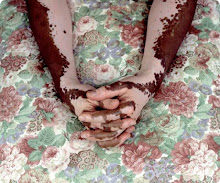Vitiligo is a skin disease that we know very little about and have no guaranteed cure for. Most treatments are experimental or intended to control and restrict the effects of the disease. Although narrowband UVB treatments are extremely promising and are the best treatment currently available to vitiligo patients, herbal treatments do offer some hope. Sadly the efficacy of these herbal remedies has been neglected and research conducted has been inadequate.
The concept behind the most successful conventional treatment (UVB treatment) is actually rooted in traditional herbal treatments that involve phototherapy. Psoralea corylifolia is an herb that is extremely useful because of its peculiar properties. It contains a naturally occurring compound called psoralen that can today also be produced in laboratories. In the past however, treatment with this herb was widely used against vitiligo as this compound facilitates and improves the reaction of the skin to sun exposure. This herb may be used as a topical application in its oil extract form or a powdered form can be used for ingestion.
The use of Picrorhiza in combination with certain conventional treatments and sun exposure has also been found to speed up recovery, as opposed to treatment with just sun exposure and medication. Similarly supplementation with a Ginkgo biloba extract has also been found to encourage repigmentation. Khella or Ammi visnaga is another herb, which could have a role to play in vitiligo treatment. An active constituent of this herb called ‘khellin’ works in a manner very similar to psoralen, demonstrating a stimulatory effect on re-pigmentation.
Subscribe to:
Post Comments (Atom)

No comments:
Post a Comment